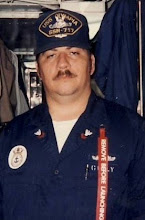
Left to right: Army, Navy/Marine Corps and Air Force Medals of Honor
In yesterday's
post about Charles Murray, I said that there are now 84 surviving MoH recipients. The complete list, with links to individual pages, can be found at the CMOHS site
here; below is a simplified list, like that which I posted a year ago.
World War II
Van T Barfoot, Second Lieutenant, US Army
Mike Colalillo, Private First Class, US Army
Charles H Coolidge, Technical Sergeant, US Army
Francis S Currey, Sergeant, US Army
Walter D Ehlers, Staff Sergeant, US Army
John D Hawk, Sergeant, US Army
Daniel K Inouye, Second Lieutenant, US Army
Arthur J Jackson, Private First Class, US Marine Corps
Robert D Maxwell, Technician Fifth Grade, US Army
Vernon McGarity, Technical Sergeant, US Army
Nicholas Oresko, Master Sergeant, US Army
Wilburn K Ross, Private, US Army
George T Sakato, Private, US Army
Hershel W Williams, Corporal, US Marine Corps
Korean War
Hector A Cafferata Jr, Private, US Marine Corps
William R Charette, Hospital Corpsman Third Class, US Navy
Duane E Dewey, Corporal, US Marine Corps
Rodolfo P Hernandez, Corporal, US Army
Thomas J Hudner Jr, Lieutenant, US Navy
Einar H Ingman Jr, Sergeant, US Army
Hiroshi H Miyamura, Corporal, US Army
Ola L Mize, Master Sergeant, US Army
Ronald E Rosser, Corporal, US Army
Tibor Rubin, Corporal, US Army
Robert E Simanek, Private First Class, US Marine Corps
James L Stone, First Lieutenant, US Army
Ernest E West, Private First Class, US Army
Vietnam War
John P Baca, Specialist Fourth Class, US Army
John F Baker Jr, Sergeant, US Army
Donald E Ballard, Hospital Corpsman Second Class, US Navy
Harvey C Barnum Jr, Captain, US Marine Corps
Gary B Beikirch, Sergeant, US Army
Patrick H Brady, Major, US Army
Paul W Bucha, Captain, US Army
Jon R Cavaiani, Staff Sergeant, US Army
Bruce P Crandall, Major, US Army
Sammy L Davis, Sergeant, US Army
George E Day, Colonel, US Air Force
Drew D Dix, Staff Sergeant, US Army
Roger H C Donlon, Captain, US Army
Frederick E Ferguson, Chief Warrant Officer, US Army
Bernard F Fisher, Major, US Air Force
Michael J Fitzmaurice, Specialist Fourth Class, US Army
James P Fleming, Captain, US Air Force
Robert F Foley, Captain, US Army
Wesley L Fox, Captain, US Marine Corps
Harold A Fritz, Captain, US Army
Charles C Hagemeister, Specialist Fifth Class, US Army
Frank A Herda, Specialist Fourth Class, US Army
Robert R Ingram, Hospital Corpsman Third Class, US Navy
Joe M Jackson, Lieutenant Colonel, US Air Force
Jack H Jacobs, Captain, US Army
Don J Jenkins, Staff Sergeant, US Army
Thomas G Kelley, Lieutenant Commander, US Navy
Allan J Kellogg Jr, Gunnery Sergeant, US Marine Corps
Joseph R Kerrey, Lieutenant (Junior Grade), US Navy
Thomas J Kinsman, Specialist Fourth Class, US Army
Howard V Lee, Major, US Marine Corps
Peter C Lemon, Sergeant, US Army
Angelo J Liteky, Captain, US Army
Gary L Littrell, Sergeant First Class, US Army
James E Livingston, Captain, US Marine Corps
Allen J Lynch, Sergeant, US Army
Walter J Marm Jr, First Lieutenant, US Army
John J McGinty III, Second Lieutenant, US Marine Corps
Robert J Modrzejewski, Major, US Marine Corps
Thomas R Norris, Lieutenant, US Navy
Robert E O'Malley, Sergeant, US Marine Corps
Robert M Patterson, Sergeant, US Army
Richard A Pittman, Sergeant, US Marine Corps
Alfred V Rascon, Specialist Fourth Class, US Army
Ronald E Ray, Captain, US Army
Gordon R Roberts, Sergeant, US Army
Clarence E Sasser, Specialist Fifth Class, US Army
James M Sprayberry, Captain, US Army
Kenneth E Stumpf, Specialist Fourth Class, US Army
James A Taylor, Captain, US Army
Brian M Thacker, First Lieutenant, US Army
Michael E Thornton, Engineman Second Class, US Navy
Leo K Thorsness, Lieutenant, US Air Force
Jay R Vargas, Major, US Marine Corps
Gary G Wetzel, Specialist Fourth Class, US Army
Afghanistan
Salvatore A Giunta, Specialist, US Army
Leroy A Petry, Staff Sergeant, US Army
That breaks down to:
14 World War II (12 Army, 2 Marine Corps)
13 Korean War (8 Army, 2 Navy and 3 Marine Corps)
55 Vietnam War (34 Army, 6 Navy, 10 Marine Corps and 5 Air Force)
2 Afghanistan (both Army)
(A Marine, Corporal Dakota Meyer, is to receive the MoH next month for his actions in Afghanistan.)
56 Army
8 Navy
15 Marine Corps
5 Air Force
(The only Coast Guardsman ever to be awarded the Medal, Signalman First Class Douglas A Munro, received it posthumously after his death at Guadalcanal in 1942.)
 Citation: On the 27th February, 1900, during the assault on Terrace Hill, north of the Tugela, in Natal, the companies of the West Yorkshire Regiment on the northern slope of the hill met with a severe shell, Vickers-Maxim, and rifle fire, and their advance was for a few moments checked. Captain C. Hansel-Jones, however, by his strong initiative, restored confidence, and, in spite of his falling very seriously wounded, the men took the whole ridge without further check, this Officer's self-sacrificing devotion to duty at a critical moment having averted what might have proved a serious check to the whole assault.
Citation: On the 27th February, 1900, during the assault on Terrace Hill, north of the Tugela, in Natal, the companies of the West Yorkshire Regiment on the northern slope of the hill met with a severe shell, Vickers-Maxim, and rifle fire, and their advance was for a few moments checked. Captain C. Hansel-Jones, however, by his strong initiative, restored confidence, and, in spite of his falling very seriously wounded, the men took the whole ridge without further check, this Officer's self-sacrificing devotion to duty at a critical moment having averted what might have proved a serious check to the whole assault.













